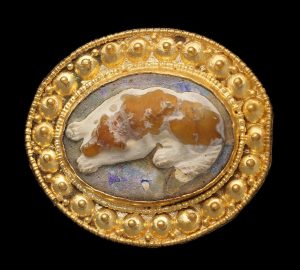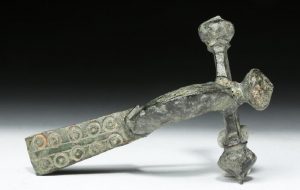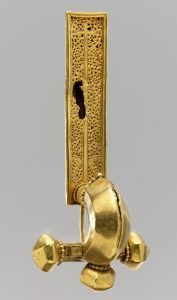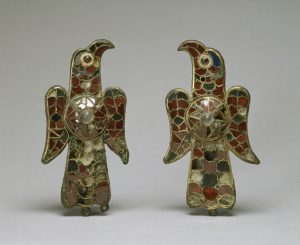Roman brooches or fibulae were used to pin clothing together including robes, togas and cloaks.
Most people are familiar with the round bronze Roman brooches, but other shapes were also made including those of crossbows and animals.
One of the first fibula designs of the Roman-era began in the La Tene III era, in the late 1st century BC. The Straight Wire fibula, also known as the Soldier’s type or Legionnaire’s type, is a very plain design. It resembles the violin bow fibula of over one thousand years earlier except that the bow has slightly more of an arch and the spring in (short) bilateral not unilateral. The Straight Wire fibula is found through the 1st century AD.
For the first time in the first century AD, several fibula designs originated in Roman Britain. One of the most distinctive British fibula design was the Dolphin. This was a series of designs including the Polden Hill type, the Langton Down type, the Colchester type and the T-Shaped type. Dolphin fibulae have a smooth arched bow that tapers from the head to end in a long point. The long bilateral spring is covered. From the top the Dolphin fibula looks like a T or the late-Roman crossbow fibula. From the side it resembles a leaping dolphin.
Roman brooches included animal (zoomorphic) shapes (birds, horses, rabbits, flies, etc.), letters or words, abstract symmetrical or asymmetrical designs (including the so-called Celtic Trumpet designs), and skeuomorphic designs (symbolic designs).
Roman brooches make excellent starter collections as Roman brooches are not only interesting but can start at very low costs.








Your comment is awaiting moderation.
There’s a quiet elegance in the way you express your thoughts, each word chosen with such care and precision.